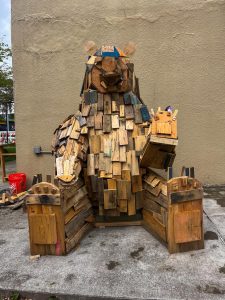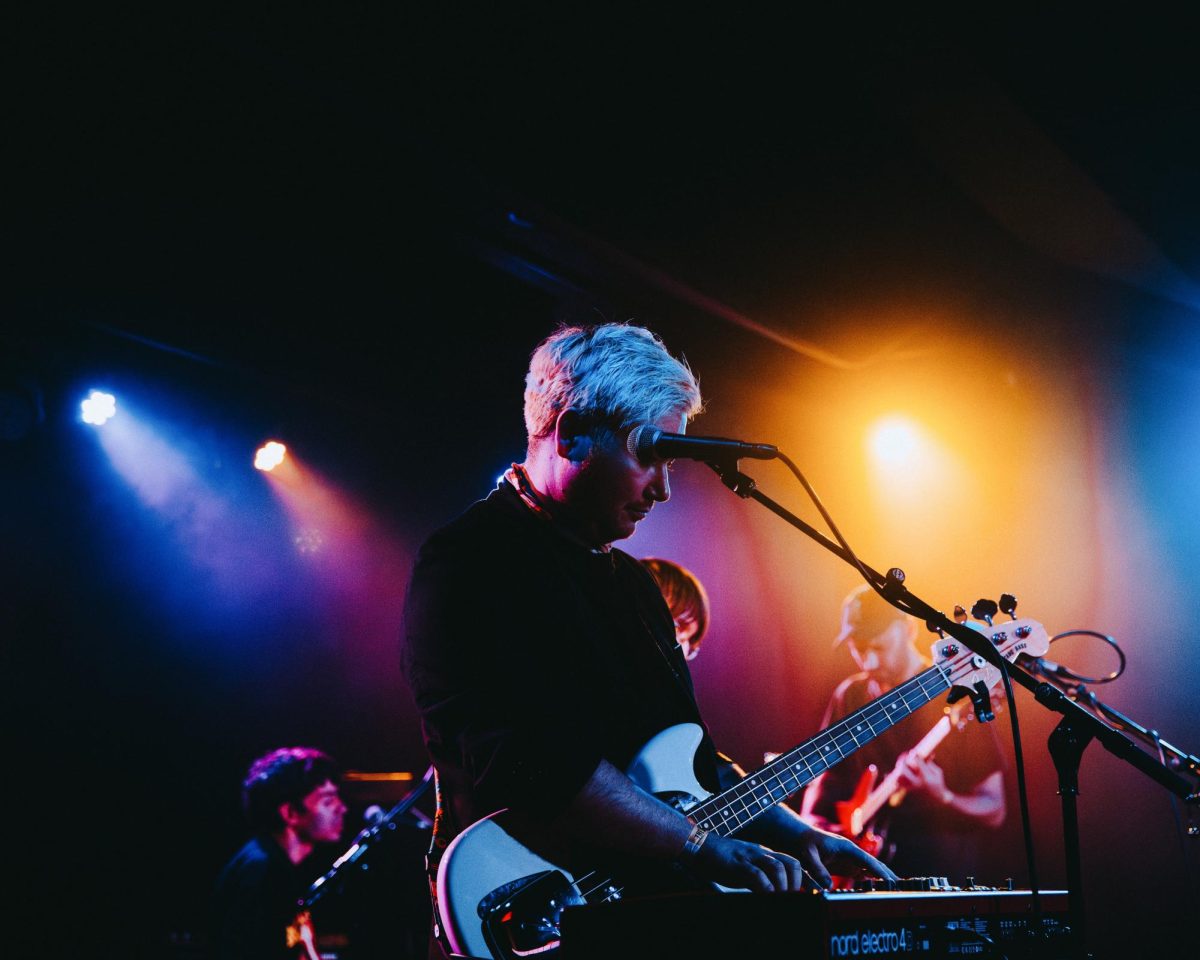
Seattle University’s campus features a variety of animals; crows, squirrels and of course rabbits. But two new animals have appeared across from the Indigenous Peoples Institute that have not been seen before on campus. Constructed by students in the Department of Visual Arts, the Bear and Impala pieces have been making impressions.
The Pacific Northwest has a connection to wooden art installations. Artist Thomas Dambo’s Northwest Trolls project has seen the greater Seattle area and Portland install a number of large wooden trolls. Each troll is hand-built using wood and found decorations, and all are free to access.
On campus, the installations take inspiration from the principles behind Dambo’s work. Trung Pham, the head of the art, art history and design department, led the project in his winter quarter 3D art class. This is the first year the class was offered.
“The idea of that assignment is to ask students to make a sculpture out of recycled materials,” Pham said. “We want people to enjoy the art outside, instead of a private home or in the gallery or in a museum or in a private collection.”
Pham assembled pallets and wood from a variety of sources. He worked with the mailroom, Grounds department, Maintenance and even Home Depot to reuse wood that would have otherwise been discarded.
This embodies the principle of Eco-Art that Pham aims to impart to his students with the project. To him, Eco-Art is about embracing natural processes.
“[Making money is] not a purpose of Eco-Art. Eco-Art will embrace the material integrity. Let the material degrade because that’s how nature is. So we not only recycle the materials and keep it from waste, but also embrace the identity of material,” Pham said.
For the group that created the Bear, the subject matter was inspired by the role of bears in the Pacific Northwest ecosystem to the Duwamish people.
Grace Larkin, a third-year visual arts major who worked on the project, also has a personal connection to bears.
“The meaning of the bear to the Duwamish people is it symbolizes strength and resilience,” Larkin said. “I’m from the Midwest, so bears are like a big thing there too.”
To Teddy Nguyen, a fourth-year visual arts major who worked on the Impala piece, it represents the animal’s artistic significance
“Impala is one of my series… me and my teammates want to choose that one because I have an Impala head made by paper mache,” Nguyen said.
Impala represents more than sculptures to Nguyen. He also has an Impala tattoo of his own design, on his inner right wrist.
Beginning construction was difficult—while Pham provided guidance, he wanted students to find their own way and encounter obstacles. Crafting a structure strong enough to support all the wood involved was one such challenge.

“At first we were so lost, because you have to make a skeleton,” Larkin said. “You have to really think about the anatomy of a bear, like how our bones support the rest of our body.”
On Impala, one notable feature is the incorporation of wood other than the pallets supplied by Pham. Nguyen said that in addition to wood provided by the Grounds department, the group traveled to Alki Beach and collected driftwood. Originally, they wanted to use exclusively driftwood for the body, but Nguyen said it was not strong enough for the full structure.
Larkin shared how creating an Eco-Art sculpture represented new artistic ground for her and her group mates.
“None of us had ever used a drill before so that was a huge challenge,” Larkin said. “I like to paint, I don’t work with wood so that was a big challenge for all of us.”
For Nguyen, the ability to inspire curiosity in the community around campus with his art is its own reward. Seeing people take photos of the piece he and his group created is a gratifying experience for him.
Like many new initiatives on campus, this class is a part of the curriculum shift in the university’s Reigniting Our Strategic Directions initiative. Pham shared that Ignatian pedagogy plays a role in the class, inspired by Dambo’s troll works. The program will also be renamed in the fall to the “Art and Visual Culture Studies.”
“It should be something students would do, make art that sustains and generates lives and for everyone to enjoy,” Pham said. “It’s time for us to think like that.”
Future classes will continue working on installations around campus, and this year’s pieces will remain for the foreseeable future. Bear was created by Kaya Brown-Carveth, Jenikka Cruz, and Grace Larkin. Impala was created by Chio Furuya, Teddy Nguyen, Sage Tottori, and Yeider Zuluaga.








